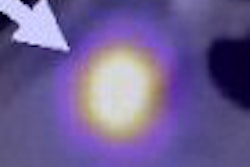
Divested by parent company Bristol-Myers Squibb (BMS) in January, Lantheus Medical Imaging is focusing its corporate strategy on opportunities in cardiac imaging following the division's spinoff.
The North Billerica, MA, company is backed by new owners Avista Capital Partners, the New York City investment firm that bought the medical imaging unit from Bristol-Myers Squibb for $525 million. The deal was finalized in January, and Lantheus rolled out its new corporate identity on March 18.
For the immediate future, Lantheus plans to continue its manufacture and marketing of radiopharmaceutical and ultrasound contrast products. The portfolio includes flagship product Cardiolite, a technetium-sestamibi-based SPECT radiopharmaceutical for heart perfusion studies, ultrasound contrast agent Definity, and the TechneLite radiopharmaceutical.
Heading the Lantheus effort is president and CEO Don Kiepert, who spoke with AuntMinnie.com about the company's strategic plans.
What does the immediate future hold for Lantheus, now that it has its own identity?
 |
| Lantheus Medical Imaging President and CEO Don Kiepert. Image courtesy of Lantheus. |
Currently, we have some very strong branded products that are well received in the marketplace in the form of Cardiolite, which is used for myocardial perfusion imaging (MPI) studies; Definity, which is used as a contrast agent in ultrasound; and our TechneLite (technetium-99m) generator for radiopharmacies.
While we are maximizing our existing product portfolio, we will pursue a parallel path that will evaluate other products we can bring into our organization, either through acquisition or licensing. We have a very strong distribution network of sales representatives and medical liaisons, and we believe they have the capacity to put other things in their bag, so that diversifying our portfolio is a key priority for us.
We also will continue our investment in research and development. We have a very promising PET perfusion agent that may be the next generation of product for cardiac imaging. That product is in phase I clinical trials.
There are a couple of other products that are in the preclinical stage. One is a PET agent for diagnosing heart failure, and another is an MRI agent that could be used to identify plaque that is vulnerable, which has been the holy grail in cardiac diagnostic procedures.
What are some of the new clinical areas Lantheus would like to explore?
Molecular imaging, oncology, and neurology, but, first and foremost, we are a cardiac imaging company, so we want to prioritize the opportunities that fit into that market segment. Utilization of PET as an oncology diagnostic tool and to monitor disease progression is something that is taking off. There are agents being developed that work quite well in the oncology arena.
What is your view of the current market, and what factors are driving it?
If you look at some of the demographics, baby boomers are coming of age, and cardiovascular disease is the No. 1 cause of death in the country. On the MPI and nuclear cardiology side, we see that market as flat or only growing mildly over the next few years.
Three to four years down the road, we see PET technology to be an area of growth, so we need to accelerate the development on our PET perfusion agent.
There is the radiopharmaceutical rubidium, which has some logistical challenges in its use, but it does produce very good images. That's an area we want to be involved in. We also want to make the most of Cardiolite and Definity as cardiac diagnostic tools.
Speaking of Cardiolite, its patent is about to expire. What are your expectations for the product and from the market when that does happen?
Our patent was to expire in January, but we received a six-month market exclusivity extension based on conducting a pediatric study. Our market exclusivity runs until the end of July. We expect that the second half of this year there will be a generic or multiple generic entrants into the market.
Part of our sales strategy is to emphasize our brand value once the generic products are launched. This is a product that has 17 years of history in the U.S. market and has been used to image millions of patients. Many patients have been studied, and we know it is a proven and safe product. We are confident and our cardiologists are confident in the product. So, we currently are working to create the right strategy on marketing the brand once a generic product is launched.
How far in advance do you plan to create and then bring products to market?
The whole drug development process from preclinical work, investigational new drug applications, phase I, phase II, and phase III trials, and all the preclinical work to support a new drug application, is a very time-consuming, cost-intense initiative.
Fortunately, our PET perfusion agent is in the clinic, and we are planning to move to phase II late this year or early next year. One of the positive things about doing clinical trials with imaging agents, when you do a phase I trial, you can evaluate safety and you begin to get an indication whether the drug is effective.
Moving to phase II, we will know more about this PET perfusion agent. It is a long haul from discovery to market introduction, but if you have a product that has great potential, the return on the investment is clearly there.
How much investment does the Lantheus plan to make in R&D?
We are looking at reinvesting approximately 8% to 11% of our revenues into research and development next year.
How has Lantheus' own environment changed now that the company is on its own?
As one division of a big corporation, it wasn't in the strategic pathway of the corporation, and investments may not have been made as aggressively as if it were a freestanding organization. I want people to know we are an independent company, our strategy is to grow the business, diversify our portfolio, and continue to advance cardiac imaging products. And, we are unimpeded by any corporate ties.
What kind of support will Lantheus receive from its ownership, Avista Capital Partners?
A significant investment has been made and our owners want to see us succeed. They will be very supportive, if additional investments are necessary to acquire additional technology or in-license technology. Lantheus will go from being a successful division of a pharmaceutical company to a freestanding company that will be very growth-oriented.
By Wayne Forrest
AuntMinnie.com staff writer
March 27, 2008
Related Reading
Bristol-Myers Squibb unit becomes Lantheus Medical Imaging, March 18, 2008
BMS posts last financials for medical imaging business, February 1, 2008
Avista completes Bristol-Myers Squibb buy, January 10, 2008
Bristol-Myers Squibb finds buyer for imaging unit, December 17, 2007
Copyright © 2008 AuntMinnie.com



















